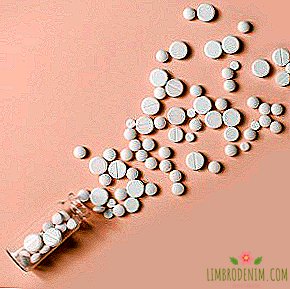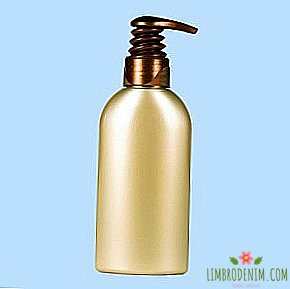Endocrinologist explains the doping scandal in big-time sports.
RECENT PUBLICATION OF CONFIDENTIAL MEDICAL DOCUMENTSleading American athletes, including Venus Williams and Simone Biles, not only spawned a new round of discussion of modern anti-doping rules, but again questioned the objectivity of employees of the main anti-doping organization WADA. An ordinary situation at its core every time leads to a difficult discussion about the status of a professional athlete and about the future of big sports in general, and only an expert can separate facts from speculation. Why the scandal has no basis and how things are going on with various medications in big-time sports, Nikita Taller, an endocrinologist, explains in detail.

The excitement in the domestic media regarding published documents is quite understandable: less than a month has passed since the end of the Olympic Games, in which almost a third of the representatives of Russia did not participate - for various reasons, but one way or another connected with suspicions of the use of prohibited substances. And documents with “steroids”, “opiates” and “amphetamines” legalized for Russia's main competitors pop up - and under the publications immediately appears a string of comments about “Williams brothers”, “anabolic athletes”, old memes about Americans and lengthy statements about diagnoses from official representatives of the Ministry of Foreign Affairs.
Formally, the situation is extremely simple: when an athlete has a chronic disease that requires appropriate course or lifelong treatment, or is injured, or preparing for surgery, or trite "catch cold" during the next flight between competitions, it is examined by a certified specialist and issues a conclusion about the need for treatment . Data on a special system is sent to WADA for processing the so-called TUE - therapeutic exception. So the banned drug becomes temporarily allowed for medical reasons - its further detection in the doping test is compared with the data on the course of treatment and its duration, which excludes the possibility of uncontrolled admission outside the previously agreed course.
The easiest way to explain this is with the example of the Williams sisters. For more than twenty years they have been playing in one of the most traumatic sports, while Serena is 34 years old and Venus is 36, which is considered a “critical” age for modern tennis (in the 90s, tennis players could hardly reach 30). Without the periodic use of painkillers (in this case, sufficiently strong semi-synthetic opioids) and anti-inflammatory drugs (glucocorticosteroids), they cannot continue to speak. In addition, in Venus, Sjogren syndrome is an autoimmune disease with a primary lesion of the secretion glands, often combined with even more serious disorders of the immune system. Because of this disease, Williams did not speak for a while.
It is your adversary.
- Simone Biles (@Simone_Biles) September 13, 2016
Sjogren's syndrome requires taking glucocorticosteroids. This, although steroids, but in contrast to the notorious "anabolic steroids" have an inverse catabolic effect, that is, with prolonged use they contribute to a decrease in muscle mass, the development of muscle weakness and an increased risk of fractures. All this does not exactly improve athletic performance. Among the visitors of specialized training sections, there are underground schemes with a combination of "anabolic steroids" and "catabolic", but it is impossible to carry out such a scheme through doping tests and remain after that "pure".
Interestingly, glucocorticoids, in particular prednisone, were used during tournaments - for example, at the French Open in 2015, which ended with a victory for Serena Williams, despite an earlier injury. Can this be considered a fraud? Probably not: the drugs used do not improve the physical indicators, but level the effects of the injury. The tournament organizers are extremely interested in the participation of the most popular athletes in the later stages and, of course, in the final.
Premature ending of the match due to injury or refusal to participate - these are reputational and financial problems, and for Serena herself, the possibility of setting another record (in this case, by the number of victories at Grand Slam tournaments). So TUE is a legalized method of extending the sports life of top players. We want to see as often as possible on the sites of Lionel Messi, LeBron James or Serena Williams, and medical services are going to meet the consumer. This probably justifies the choice of more serious painkillers that are not available in our country, even for palliative therapy of cancer patients, but are available in other regions.

The therapeutic exclusion is quite an ordinary situation. Director of the Center for Sports Medicine of the FMBA Andrei Sereda confirmed that at the Olympic Games in Rio de Janeiro, "according to some urgent indications, four athletes received permission for therapeutic use" and "no obstacles, cavils from the services that consider these documents" he did not see. "Yesterday, one of the athletes of our team in one of the hospitals needed prescription of illicit drugs - similar, by the way, to the fact that Williams sisters used. We wrote the documents at night, today we sent for review, and I am 120% sure that we will get permission to this TI, because we substantiated him by discharge from the hospital, by the doctor’s conclusion, who, according to urgent indications, introduced this drug, "quotes the words of the R-Sport specialist. Moreover, according to statistics, it is glucocorticosteroids, diuretics (diuretics) and selective β2-adrenomimetics (inhalation drugs for the treatment of bronchial asthma) are the most commonly TUE drugs.
The situation with Simone Biles is more complicated and controversial. ADHD (attention deficit hyperactivity disorder, ADHD) began to be actively studied not so long ago, although, according to some experts, this is quite common among children (noted in 3-7%). Relatively speaking, if you had a violent, impulsive and restless neighbor on a desk, a lesson and a bully, then perhaps this is not a defect in education at all, but that very ADHD. In Russia, such a diagnosis is made infrequently, but in the US it is quite an ordinary practice.
Psychotropic drugs are prescribed, including methylphenidate and ameftamines - there are a lot of methods already tested or at the research stage. The application is based on the fact that in attention deficit disorder functional disorders of neurotransmitters (for example, dopamine and norepinephrine) occur in certain areas of the brain, in particular in the prefrontal cortex. These are purely functional, not anatomical disorders: in simple terms, the wrong substances are produced in the connections between the brain cells, in the wrong quantities and in the wrong place. The use of psychostimulants contributes to an increase in neurotransmitter activity in these brain systems.
Quick update! pic.twitter.com/5tuZNIpVLC
- Elena Delle Donne (@ De11eDonne) September 13, 2016
It is important to understand that the effect of these drugs on a conditionally healthy person and a patient with ADHD will be different. Does this advantage give a professional athlete? Probably, yes, especially in those sports where the balance of normal arousal is important, giving physical and psychological vigor, and inhibiting processes that limit excessive activity and promote endurance, motivation and vigilance. In addition, they temporarily improve memory, including "muscular."
All this helps in sports, requiring a constant concentration and accurate repetition of previously repeatedly worked out elements, and gymnastics to these, of course, applies. Amphetamines also have a fat burning effect, which can also be important for gymnasts. As a result, we get a contradiction: the patient Biles has every right to receive such therapy, but Simone probably would not have such stability of performances without concomitant therapy, because ADHD itself would provoke haste and redundancy of movements. Recall that the same diagnosis as a child was made to the great swimmer Michael Phelps.
We come to the most difficult issue in professional sports: whether an athlete with certain defects and developmental characteristics, fully or partially solved with the help of treatment, has the right to compete according to the same rules as other people. High achievements in big sports - the result of breeding according to genetic features or a product of modern legalized pharmacology? Already, modern medicine has the ability to predict the potential advantages and disadvantages of a particular sport for a particular person: determine the type of muscle tissue that predisposes to sprint or stayer loads, connective tissue defects that determine the risk of injury, and so on.

If in such a future place "imperfect" athletes like Biles? Where is the line between essential medical support, equating athletes, and potential advantage? In modern sports (in professional Olympic, rather than Paralympic) there is a place for people with growth disorders (Leo Messi took a long course of therapy due to growth hormone deficiency, and the drugs are on the banned list), athletes with diabetes mellitus (insulin is the same anabolic hormone), people with impaired immune systems and undergoing organ transplantation (they both take the notorious glucocorticosteroids). If for each of these categories will be organized their own world championships and Olympic Games, it will be discrimination.
The closeness of WADA, the inability to clearly formulate the rules of the game and their justifications create the impression of chaos in the organization. In recent years, drugs have been included in the list of illicit drugs not only with unproven safety, but also with absolutely unproved efficacy in professional sports. Meldonium or a slightly earlier forbidden analogue of trimetazidine, which is extremely popular in the countries of the former CIS, could not be substantiated by anyone or anyone. Some accepted him because they believed, others forbade him, because they did not believe.
I, as a doctor, are sad to read news about doping scandals with our athletes, especially in team and "technical" sports, where the very feasibility of using doping and its substantial effectiveness is extremely doubtful. Indeed, in many situations this is due to inattention and disorganization. This may be a dietary supplement for weight loss with an unspecified composition or energy drinks containing a weak psychostimulant methylhexanamine. Another example is the use of diuretics, which in some sports can be used for faster elimination of other drugs, but most are used only for losing excess weight before gathering, so as not to fall on fines for overweight.
The same glucocorticosteroids are taken as agents for the treatment of inflammatory processes, including injuries to tendons, joints, and so on. It is solely a matter of controlling a sports doctor, documenting all the means and extracting the very therapeutic exceptions, which has not happened even ten years in the case of Maria Sharapova. That is why Serena Williams is still on the court, but Mary is not. But Pandora's box has already been opened, and, apparently, we are waiting for streams of previously confidential information about leading athletes.
Photo: sharpshutter22 - stock.adobe.com, Sherry Young - stock.adobe.com (1, 2, 3)





